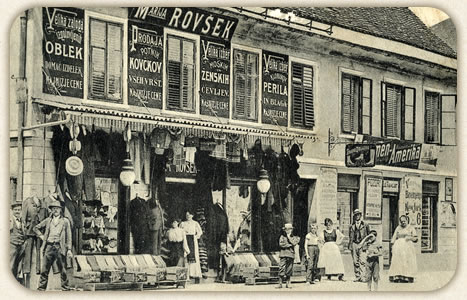|
|
|
|
|
|
|
|
|
|
 |
|
 |
|
 |
|
 |
|
|
The nearest to the railway station was the hotel Južni kolodvor (Hotel Südbahnhof). In the background, part of the station building is seen. |
|
The hotel Južni kolodvor had a garden where in the summer months musicians of the Slovenska filharmonija (Slovene Philharmonic Society) would play; along beer arrangements on buying tickets for the journey to America were made, and prostitutes and local and foreign petty tradesmen would approach the travellers. |
|
A newspaper advertisement for a concert in the hotel Južni kolodvor (1910). |
|
The inn Pri starem Tišlerju (By the old carpenter) was intended for emigrants with less money, who were coming particularly from the “Jugoslav” area. As documents in the Historical Archive in Ljubljana witness, the inn was known all over the Balkan. |
|
| |
|
|
|
|
|
|
|
|
| |
 |
|
 |
|
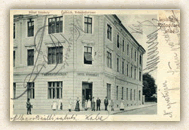 |
|
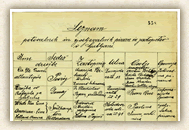 |
|
| |
The garden of the Pri starem Tišlerju was equipped simply, as the guests of this inn were also simple. The people in front of the door are undoubtedly the staff of the inn. |
|
A newspaper advertisement for the coffeehouse Ilirija in Kolodvorska ulica (1910). |
|
At the end of Kolodvorska ulica was the hotel Štrukelj, which completed hotel capacities in that part of Ljubljana. |
|
A list of emigrant and travelling offices in the street and in vicinity in 1914. |
|
| |
|
|
|
|
|
|
|
|
| |
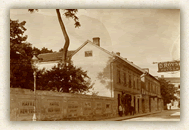 |
|
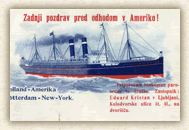 |
|
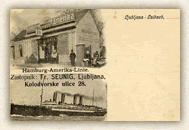 |
|
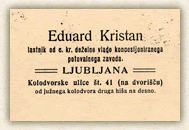 |
|
| |
The neigbour of the hotel Južni kolodvor was the emigrant office of Edvard Kristan who turned to advantage the concrete built fence for an advertising sign “Havre-via Southampton-New York”, and “Ed Kristan, Ljubljana”, which triggered complaints of his competitors. Public inviting of emigrants for buying tickets at a certain agent was prohibited. In the right upper corner of the photograph is the signboard of photographer Davorin Rovšek at whom many emigrants took photos before leaving for the world. |
|
An advertising postcard of E. Kristan with text: “The last greeting before departure for America!” |
|
An advertising postcard of the emigrant office of Fran Seunig for the shipping agency Hamburg-Amerika-Linie. |
|
Hoteliers and emigrant agents were aware of the significance of advertisement, so they printed their logotypes on all their materials. |
|
| |
|
|
|
|
|
|
|
|
| |
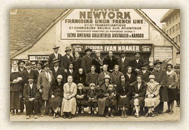 |
|
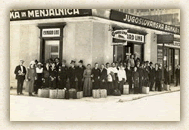 |
|
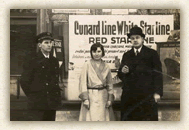 |
|
|
|
| |
A group of emigrants in front of the emigrant office of Ivan Kraker in Kolodvorska ulica. After World War I, emigration to the United States increased for a few years, until the “golden door” to America was closed (1924). |
|
A group of emigrants in front of the branch office of the company Cunard Line in Ljubljana (after 1918). |
|
Before the door of the agency Cunard Line/White Star Line in Ljubljana (after 1918). |
|
|
|



















